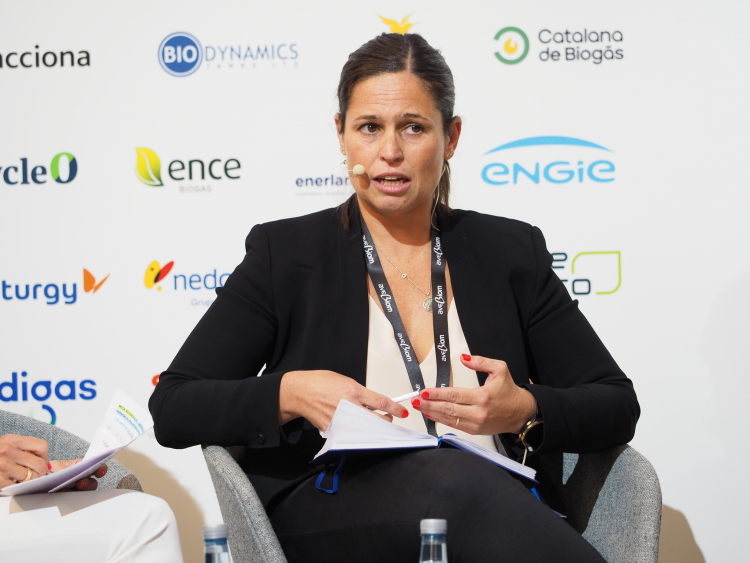The latest changes in European wastewater regulations through a 2022 European directive that is still under review pose new challenges for companies that manage the integral water cycle, such as improving the quality of the water that is purified, which which implies an increase in energy consumption, and the objective of climate neutrality for plants with more than 10.000 equivalent inhabitants.
In this field, biogas is considered a key element, as expressed during the 16th International Bioenergy Congress Malú Barrera, member of the Biogas Working Group of the Spanish Association of Water Supplies and Sanitation (AEAS), at the table on sectoral challenges.
According to the data managed by AEAS, the objective of climate neutrality affects 830 of the 2.100 treatment plants currently operating in Spain.
"In the treatment plants we have limited space and we cannot resort to other renewable energies to achieve climate neutrality and we see that in the largest facilities, with more than 100.000 inhabitants, this climate neutrality with anaerobic digestion can be achieved when they are oversized and can be introduced other co-substrates,” Barrera explained.
The solutions that AEAS works on have biogas as a key element and work in different lines. On the one hand, replace treatments in water lines with ones that reduce energy, “to the extent possible.” Likewise, they propose “centralizing the sludge to carry out joint anaerobic digestion” and migrating aerobic digestions to anaerobic digestions. Added to this is promoting those co-substrates that can be introduced, as long as they do not compromise the quality of the water we purify and replacing the thermal needs of anaerobic digesters with others, such as solar thermal. “All this will contribute to us generating more biogas or having more biogas available for recovery,” explained the member of the Biogas Working Group of the Spanish Association of Water Supplies and Sanitation AEAS.
Current situation
Malú Barrera recalled that in the integral water cycle facilities “historically we have produced biogas in all the facilities in which we have had anaerobic digestion due to the fact of treating the sludge that is generated in them.”
In his presentation he has provided some data. In 2020, 1000 GW of biogas was produced in the associated facilities; 20% more than in previous years due to an “increase in process efficiency, the introduction of other substrates and new treatments such as thermal hydrolysis.”
The main use given to the biogas produced in the treatment plants is thermal use and secondly for electrical production in cogeneration engines. Barrera recalled that there are other initiatives for the valorization of biogas, such as the production of biomethane and injection into the network, such as the BioVot project, which could also be seen at the 16th Bioenergy Congress.


